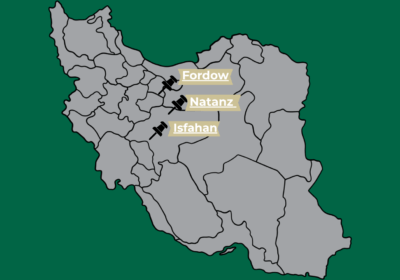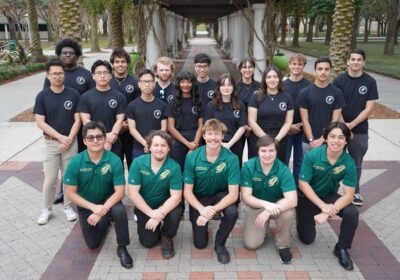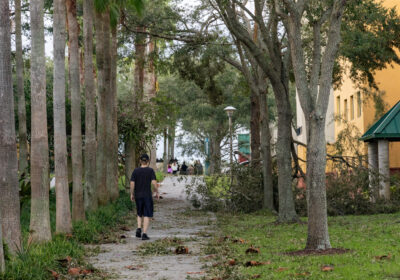USF professor in the center of immigration crisis

Anthropology professor Heide Castaneda researched migration patterns at the U.S.-Mexico border this summer.
PHOTO PROVIDED BY HEIDE CASTANEDA
The heated debate over the U.S.-Mexico border crisis has captivated the nation in recent months and one USF professor accidently found herself in the center of the conflict by accident over the summer.
This past summer, USF anthropology professor Heide Castaneda traveled to Texas and Mexico on two research projects that she had been working on since December 2012.
She was initially going to collect data on “mixed status” families near both sides of the U.S. and Mexico border who have legal and undocumented immigrant family members living in the states. Castaneda also planned on talking to immigrants traveling back to Mexico from the U.S.
The focus of her work changed drastically, however, when national attention was suddenly brought to a different issue on the border.
“I think even though we’ve been seeing this migration for some time now, people weren’t aware of it,” Castaneda said. “And so when people became aware of … the fact that these are women and children—sometimes unaccompanied children migrating because they’re fleeing violence—I think that’s what people became immediately interested in.”
After seeing the change in the political debate surrounding the border, Castaneda dropped her research and joined up with researchers from the Autonomous University of Sinaloa and an American colleague from the University of Oregon to begin looking at Central American migration routes within Mexico.
These migration routes are the primary paths that many Central American immigrants currently travel through to reach the U.S., she said. Many emigrate from their native countries in Central America, primarily Guatemala, Honduras and El Salvador.
Castaneda said the number of unaccompanied minors crossing the border has increased in previous years, reflecting the hostile environments present in many Central American communities.
“There are no opportunities for work, for education or for a future for a lot of the youth,” she said. “They’re not just leaving to find work or economic opportunity. They’re leaving because their other option is being involved in violent criminal gangs or being killed by those gangs.”
This makes the large migration of Central Americans to the U.S. different from most migrations in the sense that it is led by women and children escaping violence and not by men forced from their native countries in an economic downturn.
Castaneda said it is also unique because almost all the Central American migrants have family members in the U.S. Instead of seeking out new opportunities without a concrete destination in mind, as is commonly seen in most migration streams, many are trying to reunite with loved ones across the continent.
“When I was in the border communities in Texas, there were very few Central American migrants,” she said. “In fact, in most of Texas, migrants move on. They cross the border, and once they get to the United States, they’re off to wherever their family members live.”
Castaneda said she also couldn’t find any discernable patterns regarding where Central American migrants end up after they have crossed into the U.S. Instead of congregating in one part of the country, they usually end up traveling all over.
This is mainly because of the U.S.’s historical ties with the societies and governments in Central America, she said. Most of the time, the lives of Central American migrants were heavily impacted by the presence of the U.S. in their native countries.
“It’s not by chance that they come to the United States,” she said.
The journey that Central American migrants take in order to reach their families is often long and arduous, with numerous hazards along the way.
First, migrants must decide which path to the U.S. they can take, as there are only two different migration streams generally used to reach the U.S from Central America. The safer path, Castaneda said, involves paying a smuggler $7,000-$10,000 in order to purchase transportation that leads from the Guatemalan border directly to South Texas.
However, Castaneda found that many migrants cannot afford to pay smugglers thousands of dollars and are essentially forced to travel the path that leads through Sinaloa in Western Mexico to California and Arizona. This requires them to hang precariously onto the tops and sides of freight trains in order to reach Sinaloa, as well as cross the Sonoran Desert, usually by foot, to finish the last leg of their journey.
“When I was down on the border in June they were seeing, in just that one sector of the border patrol where I was located … a thousand unaccompanied children a day cross the border,” she said.
Aside from the risks that they take while traveling to the U.S., Central American migrants also risk how they will be received by the residents of border communities that migrants stay in along their trip.
While the numbers of Central American migrants traveling to the U.S. has greatly increased in the past few months, Castaneda said the Central American migration crisis is not a new issue. In fact, though President Obama officially labeled the issue a “crisis” earlier this year, the U.S. has experienced children migration from Central American much earlier than that.
“I’ve been doing work on the border for the past year and a half, and there’s been unaccompanied children migrating across the border during that entire time and actually before then,” she said. “It sort of peaked, I think, this spring, and that’s when it started to draw national attention and entered the popular imagination as a crisis.”
This new nationwide attention brought to the Central American migration crisis may also be a significant factor in determining when action is taken, and by whom, in order to begin the crisis’ resolution.
Castaneda is also trying to involve students by bringing them in on her research and working to influence U.S. policy makers and immigration laws.
Recently, she began working with the Scholar Strategy Network, an organization that distributes policy briefs written to the media and politicians by researchers. The idea is to have politicians inform their positions with research done by academics who have intensely studied the specific issue.
“We try to inform policy makers about what the big picture is … who is being affected and what the impacts are,” she said.
A large portion of U.S. foreign policy that Castaneda said she would like to see changed is the U.S.’s focus on further militarization and securitization in countries such as Guatemala, Honduras and El Salvador.
Instead, she said the U.S. government should pay more attention to the social and economic development in these countries.
“People don’t want to leave their countries,” she said. “People would much rather stay in their home communities. … We could talk about short-term solutions, but I think the message, the real message, is how do we create lasting change so that these migration flows are no longer necessary?”







